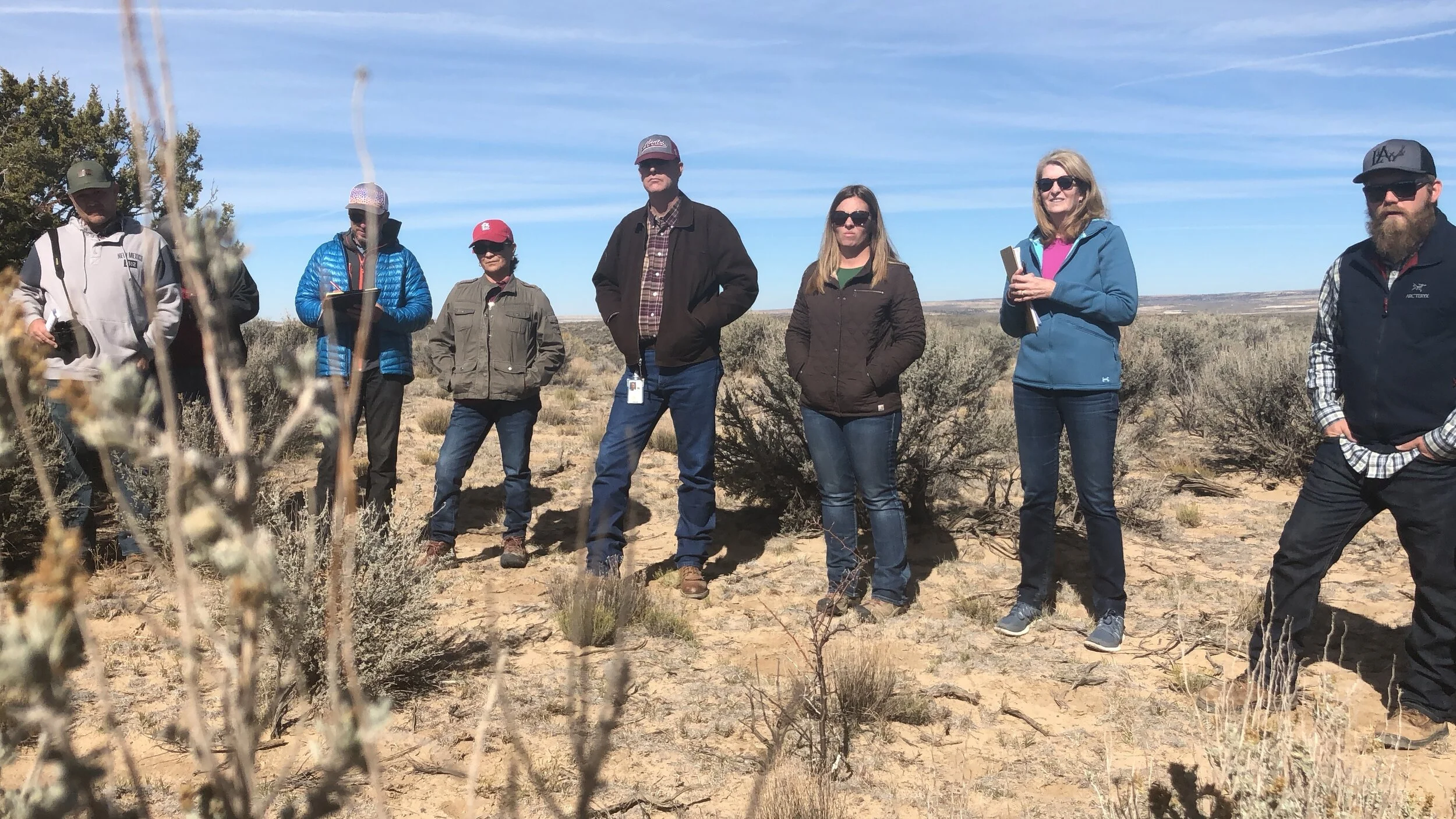
Cultural Resources
During scoping, what did the public ask use to consider in the FMG RMPA/EIS for cultural resources?
How would the BLM and BIA minimize or mitigate effects from oil and gas development on cultural resources, the nearby Chaco Culture National Historic Park (CCNHP), and the greater Chaco landscape, including:
Physical impacts;
Auditory impacts such as increased noise;
Visual impacts such as light pollution; and
Impacts on tribal resources and cultural practices?
Beehodiyin Hazaani
Listen to information about this virtual open house station in Navajo.
Sacred peaks of the Navajo Nation—note that the FMG RMPA/EIS Planning Area is located in the center of the Navajo sacred geography
Major Chacoan resources in the Four Corners region
The agencies addressed impacts to cultural resources in the DEIS by developing varied stipulations for each alternative and Conditions of Approval (COAs), such as:
FMG RMPA/EIS Section 106 field meeting in October 2018
Oil and gas leasing closures or no surface occupancy (NSO) restrictions around CCNHP (see figure below)
BLM oil and gas leasing restrictions such as NSO, controlled surface use (CSU), or timing limitations (TL) around culturally important properties including traditional cultural properties (TCPs); historic properties for which setting or feeling are important aspects of integrity; Chacoan outlier sites; Chacoan roads; and other structures as houses or barns.
TL stipulations prohibit construction, drilling, well completions, and/or workover rigs for 1 mile on either side of the main entrance road into the CCNHP during peak from April through October or other times identified during Section 106 consultation for implementation-phase oil and gas development
BIA leasing stipulations limit noise and light pollution (to protect Yádiłhił) near the CCNHP; Chacoan outliers; culturally important properties including TCPs; and locations significant to residents, such as chapter houses, schools, and houses
COAs limit noise and light pollution at certain cultural resources
Analysis of impacts on the aforementioned cultural resources and cultural practices for tribes at culturally important properties including TCPs
BLM alternatives for leasing closures or NSO stipulations near the CCNHP
Huerfano Mesa Dzil’na’oodlii
FMG RMPA/EIS Section 106 field meeting in October 2018
The Section 106 process
In addition to the stipulations and analysis developed for NEPA in the Draft FMG RMPA/EIS, the BLM and BIA are engaged in the Section 106 process of the National Historic Preservation Act (NHPA). This process has included ten in-person meetings with our consulting parties, who range from various tribes and pueblos to members of the public and historic preservation organizations, as well as individual Indian allottees. The BLM and BIA are currently preparing a programmatic agreement to improve the Section 106 consultation process for implementation phases of fluid mineral development (e.g., leasing and applications for permits to drill) and facilitate the provision of timely and meaningful input by tribes and other consulting parties regarding the identification and evaluation of historic properties, identification and assessment of potential effects on historic properties, and the resolution of adverse effects. For more information on the Section 106 process click here.
Next Station
For more information on the Draft FMG RMPA/EIS please contact Sarah Scott, 505-564-7689 or Robert Begay, 505-863-8515
If you have questions about the Draft FMG RMPA/EIS or wish to be added or removed from the mailing list, please contact BLM at blm_nm_ffo_rmp@blm.gov.






